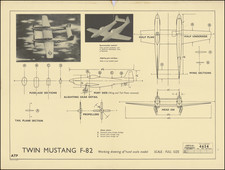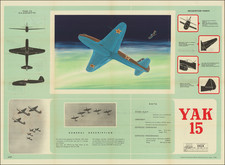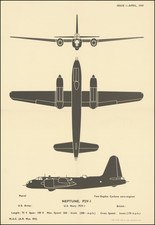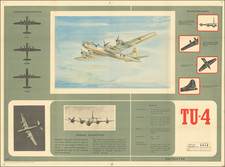Harpoon (Double Wasp) Reconnaissance Bomber, an aircraft identification poster from October 1946, presents three distinct profiles of the bomber. Issued under the auspices of the Ministry of Supply with the reference "A.R. Mat. 572", it provides specifications such as the bomber's length and span. Bearing the label "NAVY: PV-2", the poster offers an intricate glimpse into aviation design and military reconnaissance in the immediate post-World War II era.
The post-war years saw a nuanced shift in military priorities. With World War II having recently concluded, nations were grappling with the twin challenges of demobilization and preparing for a potentially new geopolitical landscape. Aircraft like the Harpoon (Double Wasp) epitomized this transition, reflecting advancements in aviation technology and serving both as tools of active warfare and as symbols of deterrent capability in the emerging Cold War scenario.
The PV-2 Harpoon was an American patrol bomber aircraft developed during World War II. Designed and produced by Lockheed as an advancement of its predecessor, the PV-1 Ventura, the Harpoon featured numerous improvements, with its most distinguishing characteristics being a longer wingspan and greater fuel capacity. Employed predominantly in the Pacific Theater, the PV-2 was lauded for its endurance and versatility, being used for long-range patrols, bombing missions, and reconnaissance tasks. Its adaptation to various roles, coupled with its reliable "Double Wasp" engine, solidified the Harpoon's place as a formidable asset in the Allies' aviation arsenal during the latter stages of the war.









![[ World Powers - Confrontation or Relaxation? ] Weltmachte-Konfrontation oder Entspannung?](https://storage.googleapis.com/raremaps/img/small/90939.jpg)


![(Cold War U.S. Aircraft Identification) Thunderjet P-84 [Thunderjet F-84]](https://storage.googleapis.com/raremaps/img/small/96742.jpg)

